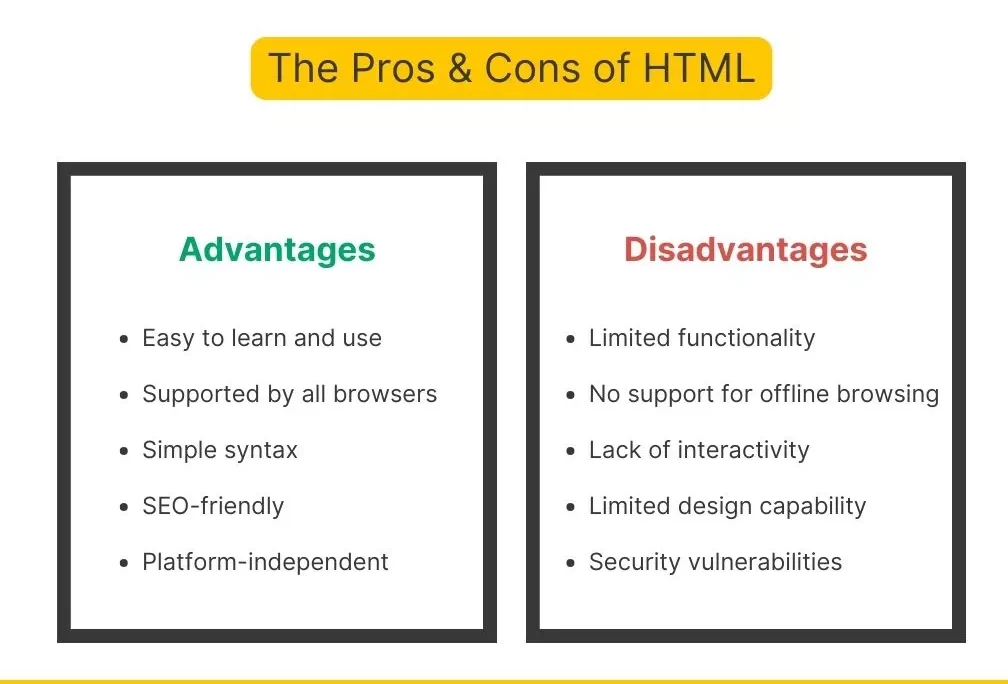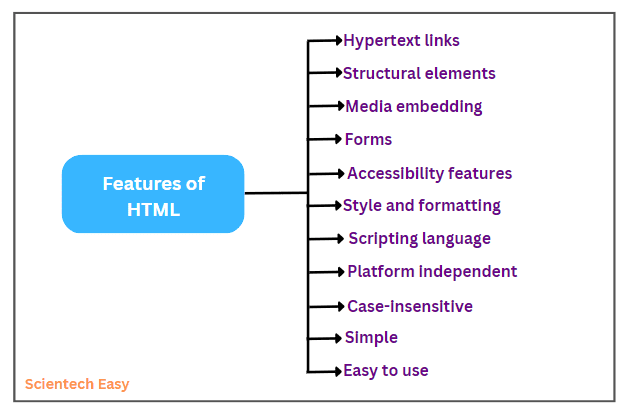14 Exciting HTML Project Ideas to Build and Showcase Your Skills
Table of Contents

What is HTML?
HTML (HyperText Markup Language) is the standard markup language used for web pages and web applications. Although learning the fundamentals of HTML is important, the most effective solution for mastering it is through practice with some HTML project ideas. For seasoned or top web developer candidates, the concept of learning the latest skills is key to getting jobs, but for newbies, building a portfolio of real HTML projects that highlight your skills makes you stand out in the field.
This list comprises 14 fun, easy, to complex, static, and interactive web applications that make for great HTML project ideas—you will find them helpful as a student, a beginner seeking to get hands-on, or an aspiring developer.

*unstop.com
Top 14 Ideas For HTML Projects You Should Know About
Here are the 14 best HTML project ideas you can check out in 2025:
HTML Project Idea #1: The Memorial Page
website in memory of someone you love and respect. As a part of this HTML project idea, you must create a website that pays tribute to a noteworthy individual.
Practicing the basic HTML building blocks is a great idea for this HTML project. The main parts of a web page will be arranged and laid out for you. You’ll also learn how to include images on the webpage, including a picture of the celebrated individual.
All things considered, this is one of the HTML projects for students that aids in familiarisation with the fundamentals of creating layouts and content using common HTML elements. It makes an ideal first project for beginners.
HTML Project Idea #2: Survey Form
Building a website with a survey form shows you how to deal with user input validation and HTML form components. The task is to create a website with many field types where visitors may respond to survey questions.
Among the most often used field types are text boxes (which allow users to provide longer-form replies), checkboxes (which allow users to choose one or more options), radio buttons (which allow users to select only one option from a list), and dropdown menus (which allow users to choose just one item).
This HTML project idea helps create a survey form. It is a great approach to learning HTML forms, decorating form components, and doing basic validation on user inputs.
HTML Project Idea #3: Technical Documentation Website
Pages of technical documentation include all details a person may need to comprehend and operate an item, service, or technology. Building a multi-page website with a primary navigation menu at the top or side is the task at hand. The information will then be divided into logical subjects or categories.
For instance, when documenting how to use a software program, you may include sections for an introduction, installation instructions, an overview of the key features, advanced advice, frequently asked questions, and troubleshooting techniques.
This kind of assignment teaches you how to logically divide and arrange your material across many linked pages in a user-friendly manner. This is one of the HTML projects for students, which gives experience in making menus for navigation that connect the pages.
HTML Project Idea #4: Personal Portfolio Website
Making your portfolio website is a worthwhile endeavor if you want to be a web developer. Your abilities, personal projects, educational background, employment experience, and other information will all be highlighted on this multi-page website.
The portfolio may be used alone or as an online resume. It is viewable to prospective employers who want to evaluate your skills and the quality of your work.
Building it will provide you with expertise in structuring various pages, such as an About Me, Projects, Resume, and so forth, using HTML. With the CSS abilities you’re learning, you’ll have chances to elegantly design every piece of information.
One crucial component is ensuring that the whole portfolio website looks fantastic and works well on desktop, tablet, and mobile devices. For this reason, you must use responsive design strategies.
All things considered, this HTML project idea combines a lot of HTML, CSS, and JavaScript expertise into one all-inclusive project that you can keep improving.
HTML Project Idea #5: Product Landing Page
A product landing page is a specialised single web page intended to promote and discuss particular products or services to encourage visitors to buy them.
With this kind of work, you’ll use HTML and CSS to create a visually appealing and enticing website design that purposefully directs users towards a purchase. Its many parts will include:
- A header space with well-written marketing content introducing the product
- Parts emphasizing the main characteristics and advantages
- Technical characteristics or product specifics; information on pricing and option comparisons
- Visuals such as excellent product images or demonstration films
- A clear form or call-to-action to complete the transaction
You’ll gain experience arranging and positioning all the pieces neatly using contemporary CSS layout methods like Flexbox and Grid when you code this landing page. Working on responsive design, you will ensure that the website looks fantastic and is simple to use on any device.
All things considered, it’s an HTML project idea to learn HTML/CSS based on successfully showcasing and selling a product online.
HTML Project Idea #6: Parallax Scrolling Website
This popular web design technique creates an illusion of depth and dynamism, offering users an engaging and immersive browsing experience. By orchestrating background elements to move at different speeds as the user scrolls, a captivating visual effect is achieved. This task challenges your proficiency in utilizing advanced CSS to craft the parallax scrolling effect, with the potential incorporation of JavaScript for fluid animations.
Achieving the desired depth perception involves skillfully manipulating z-index values and mastering background placement techniques. Additionally, you may employ JavaScript to detect scroll events and dynamically adjust element positioning. Seize this opportunity to delve into sophisticated CSS concepts such as transitions and transformations, while refining your JavaScript skills to infuse interactivity seamlessly into your web designs.
HTML Project Idea #7: Image Gallery
Mastering the art of working with lists, embedding media files in HTML, and crafting layouts with CSS is essential when building an image gallery. In this project, you’ll create a responsive gallery showcasing thumbnail photos that expand into a sleek lightbox-style overlay upon clicking. Optional enhancements include implementing filters to categorise photos and stylish transition animations. CSS will be instrumental in both decorating the layout and achieving the lightbox effect, while HTML lists or grids will organise the gallery content.
JavaScript may be necessary for adding filtering or animation functionalities, as well as managing the opening and closing of the lightbox. This assignment offers valuable hands-on experience in working with media files and creating interactive online experiences while reinforcing your understanding of responsive design principles.
HTML Project Idea #8: Event Registration Page
To register for an event, visitors may enter their name, email address, payment information, and other information on an event registration page. Creating this project will provide you with practice in creating forms and carrying out field validation, including making sure the necessary information is supplied and using the right data types. JavaScript may be applied to it to offer capabilities like conditional form fields.
Arranging your HTML form with different input fields, labels, and submit buttons is the first step in creating an event registration page. The style and visual appeal of the form will require CSS. To guarantee that users input accurate information before submitting the form, you will also need to employ JavaScript to enable client-side validation. This can include making sure payment information is in the right format, verifying email addresses, and looking for necessary fields.
HTML Project Idea #9: News/Blog Website
Designing a news or blog website offers practical experience in navigation systems, content organisation, and search functionality. WordPress is a recommended CMS choice for its versatility and responsive design capabilities. Mastery of theme customisation and plugin integration is essential. Additionally, incorporating JavaScript enhances interactivity, such as score tracking in quizzes. Ensure templates for articles, categories, and archives alongside robust search features. For quiz platforms, design question frameworks and intuitive interfaces for user engagement.
To control the logic of the quiz—which includes keeping track of the user’s score, providing feedback on right and wrong answers and maybe adding extras like a leaderboard or timer—you will need to use Javascript. Using server-side technologies like PHP or Node.js to manage user authentication and certification, as well as to store and retrieve quiz results, may also be necessary.
HTML Project Idea #10: Online Quiz Platform
This HTML project idea is one of the more challenging ones. You’ll build a system for taking quizzes or exams online. It will have different question types like multiple choice or fill-in-the-blank. The system needs to keep track of the user’s score. You could add features like a leaderboard or certifications. JavaScript is required to make the quiz interactive.
HTML Project Idea #11: Recipe Website
You can practice page design and content management with a cookery website. The website will be divided into specific parts for every kind of cuisine, including sections with ingredient lists and culinary advice, delicious images, and videos, and maybe search and filter capabilities. Its responsive design is essential to its universal platform usability.
HTML Project Idea #12: Page of E-Commerce Products
Build an interesting and instructive product listing page for an e-commerce site. Along with e-commerce features (such as adding items to a shopping cart or beginning the checkout process), this page should provide product descriptions and price information. Building forms for user input—like delivery details—working with dynamic information, and maybe integrating third-party services via APIs, is a great chance to get experience.
HTML Project Idea #13: Interactive CV/Resume
While most resumes are just static PDF files, for this project, you will design an interesting one-page website that functions as an interactive online curriculum vitae (CV). Sections on your resume will include all the usual information, including your contact information, educational background, work experience, and skills. Highlighting your biggest accomplishments using interactive components like popups and dynamic effects might help to make it more engaging.
HTML Project Idea #14: The Real-Time Weather App
Gain hands-on experience integrating external APIs by creating a real-time weather app. Your task involves building a website that fetches meteorological data from an API, automatically detecting or allowing users to select their location, and displaying current weather conditions accordingly. This project necessitates proficiency in conducting API requests, parsing JSON responses, and leveraging JavaScript to dynamically update website content.
Why Work on HTML Projects?
One of the best ways to transition from theoretical HTML knowledge to practical experience is by working on numerous projects. It helps you use what you’ve learned in real-life situations—honing both your coding skills and your problem-solving skills, and giving you the confidence to tackle more obscure projects in web development.
If you’re just getting started or need to boost your portfolio, working with HTML project ideas has multiple benefits:
1. Put Theory into Practice
You study web development topics in the classroom, but HTML projects provide the actual hands-on experience. You learn not just what you should do, but also how and why it works within a real application.
2. Build a Job-Ready Portfolio
Completing and presenting HTML projects shows off your technical skills, creativity, and cyberspace flow for inspiration—all qualities desired from employees and customers alike in website design.
3. Learn Key Web Development Concepts
If we take a look at those projects, they teach fundamental front-end development skills such as:
- Using Semantic HTML Tags to Structure Web Content
- Creating responsive layouts using CSS frameworks or Flexbox/Grid
- Form validation and secure collection of user inputs
- Integrating JavaScript for interactivity, such as dynamic content, toggles, or animations
- Using Fetch to handle API Data for displaying live information, such as the weather and news
4. Build Confidence and Ownership of Projects
Every completed project is a mini success that builds your confidence. You learn to debug, optimise, and think like a developer, critical to passing interviews and collaborating effectively in the tech space.
Whether you are new to the web and trying to learn your first tag or a student trying to show-off your ability to build some front-end software, HTML projects for students is a good place to start. They pave the way to get familiar with front-end technologies and later on full-stack development.

*scientecheasy.com
The HTML Project — What Defines A Good Project?
A good HTML project is not just about aesthetics; it demonstrates concept, technical ability, and real-world relevance. It showcases a level of understanding about how web pages are structured as well as how users interact with that structure. From landing pages to personal portfolios to blogs, the top HTML project ideas include these essential characteristics:
1. Clear Structure
Good HTML begins with a structured layout. Semantic tags help increase both readability as well as SEO and accessibility. A clear document flow helps both humans and bots understand your content.
For example, don’t wrap everything in countless tags; make your code easy to maintain and search engine friendly.
2. Responsive Design
Responsiveness is non-negotiable, so a website must work across a range of devices for its users. A responsive HTML project should adjust effortlessly to the varying screen sizes using media queries, flexible grid systems, and responsive images.
Use percentage-based widths, or CSS Grid/Flexbox, to create a layout that is responsive to mobile, tablet, and desktop.
3. Accessibility
Accessibility allows people with disabilities to use your content. An optimal HTML project uses alt variables to define its images, ARIA roles for assistive technologies, and ensures all functionalities through keyboard navigation.
For instance, adding aria-label to inputs of a form or ensuring that your links have relevant text will make your project more usable for those using screen readers.
4. Functional Elements
Backing up and working out your basic user interactions—working buttons and links, forms, and navigation—should be part of your project. These elements need to work, be intuitive, and make the user experience easy and free from frustration.
For example, a contact form that pulls validation and feedback messages out of the bag tells the world you are familiar with both user experience and form behaviour.
5. Clean, Reusable Code
Code that is written well is more readable, debuggable, and extensible. Proper indentation, comments, and naming conventions keep your HTML clean and professional.
Tip: When building HTML, make it more componentised (i.e modals, cards, etc.) if you are going to integrate with a framework later.
Even the most basic projects can feel impactful when thoughtfully constructed. Concentrating on elements will help you develop a professional, scalable, and user-friendly experience, be it a to-do list app or a fully-fledged website.
Take It to Another Level: Your Web Development Career
For more serious web development concepts and full-stack web development, you can enrol in executive programmes in web development in collaboration with Jaro Education.
Online programmes can help you learn through case studies, get expert mentorship, and take deep dives into front-end and back-end technologies. You’ll practise on real-world HTML projects and also develop capabilities across the entire web development stack.
Jaro Education’s tailored programmes offer industry-aligned material, expert-led instruction, and flexibility for beginners seeking to enter web development or for professionals wanting to future-proof their skills.
Conclusion
Overall, HTML projects are an excellent resource for beginners to gain tangible skills and practical experience with web development! The 14 ideas range from relatively straightforward websites, like tribute pages and survey forms, to interactive sites, such as online quizzes and weather applications.
With each project, you will practise HTML and other related skills such as CSS for styling, JavaScript for interactivity, and integrating with APIs with a bid to make websites responsive. Completing these projects allows beginners to build a portfolio to demonstrate to employers their skills. Hands-on practice with the website components leads to a deeper understanding that serves as a springboard for learning more and pursuing a career as a full-stack web developer.
Frequently Asked Questions
Should I learn CSS or JavaScript before beginning HTML projects?
Not necessarily. HTML is the basis of any web project and can be practised by itself. But some knowledge of CSS will ensure you can style your projects, and JavaScript can make things interactive. You can work with pure HTML projects, along with adding CSS and JS as you move along.
What tools do I need for building and testing HTML projects?
All that you need is a text editor (VS Code/Sublime Text/Notepad++) and a web browser (Chrome/Firefox). As you progress and your comfort level increases, you may dive into things like GitHub for version control or CodePen for fast online previews.
How do I choose the right HTML project for my skill level?
Begin with simple, single-page projects, such as a personal profile, a resume page, or a simple form. Once you feel confident, begin to work on multi-page layouts or projects that require API calls and dynamic data through JavaScript. Choose projects that interest you to keep your motivation up.
Can I get a web development job with HTML projects?
Absolutely. Recruiters want to see actual projects, so they can assess your skills. Well done, HTML project ideas (hosted on GitHub or personal portfolio site) can show highly desirable skills of web building, structuring, and maintenance—an essential skill in front-end and full-stack roles.
Recent Blogs
It seems we can't find what you're looking for.










![UI UX design What’s the Difference [2025 Update]](https://jaro-website.s3.ap-south-1.amazonaws.com/2025/03/UI-UX-design-Whats-the-Difference-2025-Update.webp)



